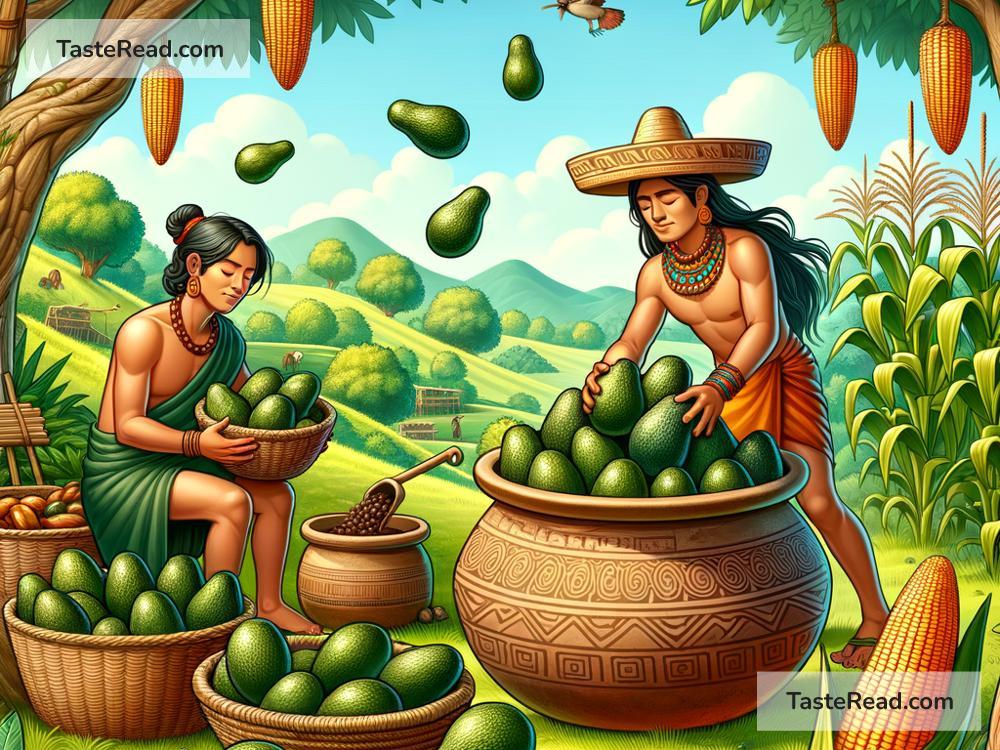The Curious Story of Avocados in Ancient Aztec Diets
Avocados—those creamy, green fruits we spread on toast, mash into guacamole, and toss into salads—are beloved across the world today, but have you ever wondered where this fruit originally came from? Long before avocados became trendy at brunch spots, they were an important part of life for the Aztecs, an ancient civilization that flourished in Central Mexico from the 14th to the early 16th century. What’s even more fascinating is the deep connection avocados had to their culture, health, and daily life. Let’s explore the curious story of avocados in ancient Aztec diets.
Origins of the Avocado
The avocado is native to Central Mexico and Central America, where it has been cultivated for thousands of years. Its scientific name, Persea americana, hints at its roots in the Americas. The Aztecs called the avocado ahuacatl, which ironically also means “testicle” in Nahuatl, the Aztec language. This name likely came from the fruit’s shape and the fact that avocados often grow in pairs on the tree.
Avocado trees thrived in the warm, tropical climate of the region, making the fruit an abundant and easily accessible food source for the Aztecs. Archaeological evidence suggests that avocados have been consumed in Mexico for over 9,000 years, long before the Aztec civilization rose to power.
A Superfood of the Ancient World
Today, avocados are considered a superfood, thanks to their healthy fats, vitamins, fibers, and antioxidants. But the Aztecs knew all about its benefits long before modern science could analyze its nutritional content. For them, avocados weren’t just delicious; they were an essential part of their diet and a source of vital energy.
The Aztecs believed avocados had nourishing and restorative properties. They used the fruit to fuel their active lifestyles, which included farming, construction, and even warfare. Because avocados are loaded with healthy monounsaturated fats, they provided long-lasting energy and helped maintain good health in times when physical strength and endurance were crucial.
The Aztecs also consumed avocados for medicinal purposes. The fruit’s creamy texture made it ideal for soothing skin conditions. Women reportedly used avocado pulp as a natural moisturizer to keep their skin soft and healthy. Although little evidence suggests they understood the science behind the fruit’s benefits, the Aztecs intuitively knew that avocados could help rejuvenate and heal the body.
Avocados and Aztec Culture
Avocados weren’t just a food to the Aztecs; they also held cultural and symbolic significance. Many ancient civilizations connected foods to stories of creation, deities, and cosmic balance, and the Aztecs were no different. They saw avocados as a gift from the gods, a fruit that embodied vitality, fertility, and abundance.
The Aztecs may have also associated avocados with love and romance, thanks to their name, ahuacatl (testicle), and their connection to fertility. It was believed that the fruit could boost energy and vitality, making it a popular choice for newlyweds and couples seeking to start families. Some even say that Aztec priests discouraged young maidens from eating avocados because they were thought to heighten passion!
Avocado trees were also symbols of growth and prosperity. These trees could live for decades and produced an abundance of fruit, making them a model of sustainability in a society that respected nature’s cycles.
How the Aztecs Ate Their Avocados
If you’ve ever had fresh guacamole with tortilla chips, you’ve already experienced one of the oldest ways people have enjoyed avocados! The Aztecs were experts at combining avocados with other native ingredients to create flavorful dishes—and guacamole is one we still love today. In Nahuatl, the word ahuacamolli translates to “avocado sauce,” combining ahuacatl (avocado) with molli (sauce).
The Aztecs prepared guacamole by mashing avocados and mixing them with ingredients like tomatoes, chili peppers, onions, and cilantro, depending on what was available. This versatile condiment was used to enhance the flavors of other dishes, often paired with corn tortillas or tamales, which were staples of their diet.
Avocados were also eaten fresh from the tree or paired with beans, squash, and maize in hearty meals that nourished their bodies for the demanding tasks of daily life. Whether enjoyed raw or blended into sauces, avocados were a treasured ingredient in the Aztec kitchen.
The Journey of Avocados to Modern Times
So, how did avocados go from Aztec fields to the global kitchens of today? When Spanish conquistadors arrived in Mexico in the early 1500s, they brought back avocados to Europe. Although the fruit didn’t become popular right away, it gradually spread across the globe over centuries. Today, Mexico remains the world’s largest producer of avocados, exporting them to countries far and wide.
Avocados have come a long way since their days in the Aztec Empire. Despite their global fame, their ancient roots remain an important reminder of how the Aztecs lived in harmony with nature, using native foods not only for sustenance but also for health, ceremony, and culture.
Conclusion
The story of avocados in ancient Aztec diets is as rich and flavorful as the fruit itself. These fascinating people understood that food wasn’t just about survival—it was about thriving and connecting to something bigger. The Aztecs embraced the avocado as a source of nourishment, medicine, and symbolism, leaving behind a legacy that now touches kitchens around the world.
So, the next time you enjoy an avocado on your toast or in your guacamole, take a moment to think about its history. You’re eating a fruit that once sustained an entire civilization and played a role in their culture. Truly, avocados are not just food; they’re history served fresh!


